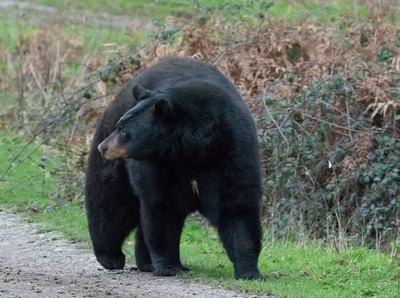DNR Asking for Help in Locating Bear Dens
Wednesday, January 4th, 2023 -- 8:00 AM

(By Danielle Kaeding, Wisconsin Public Radio) Finding a bear den is like finding a needle in a haystack for Jennifer Price Tack with the Wisconsin Department of Natural Resources, according to Danielle Kaeding with Wisconsin Public Radio.
"It's very difficult. I have 90 acres out near Monico in Oneida County, and I'm always out there looking for bear dens. I know we have bear on the property. We've had them on camera, and I have not found a den. And, I know what to look for," Price Tack, the DNR’s large carnivore and elk research scientist, said.
That’s why the DNR is asking for the public’s help to spot bear dens as part of its ongoing black bear litter and diet survey. The study began in early 2022, and it will provide new estimates of reproductive rates for black bears in each of the state’s management zones.
People are urged to report any information online about known black bear dens without approaching or entering them. Price Tack said the goal is to improve the accuracy of the agency’s population models.
Reproductive rates are an important factor in obtaining reliable projections, and that model is used when deciding hunting quotas for bears. "The reproductive rates we're interested in are litter size, litter frequency and cub survival," Price Tack said.
Staff have already placed GPS collars on 13 female bears, known as sows, across nearly a dozen counties extending from Iron County in far northern Wisconsin to as far south as Jackson County. The DNR hopes to collar 25 more this winter.
The collars help the agency locate the sows in the coming years and learn more about what they’re eating. Price Tack noted bears are a major source of corn damage in the state, pulling down stalks and munching kernels off corn cobs.
"There is some evidence that bears in areas with a lot of agriculture, with a lot of corn, are having larger litters, so that's something we're interested in finding out more about," she said.
A normal litter size is typically two to three bear cubs that are usually born in January, according to Randy Johnson, the DNR’s large carnivore specialist. He said one of the other objectives of the survey is to gather hair and tissue samples to examine their diets.
Feel free to contact us with questions and/or comments.




